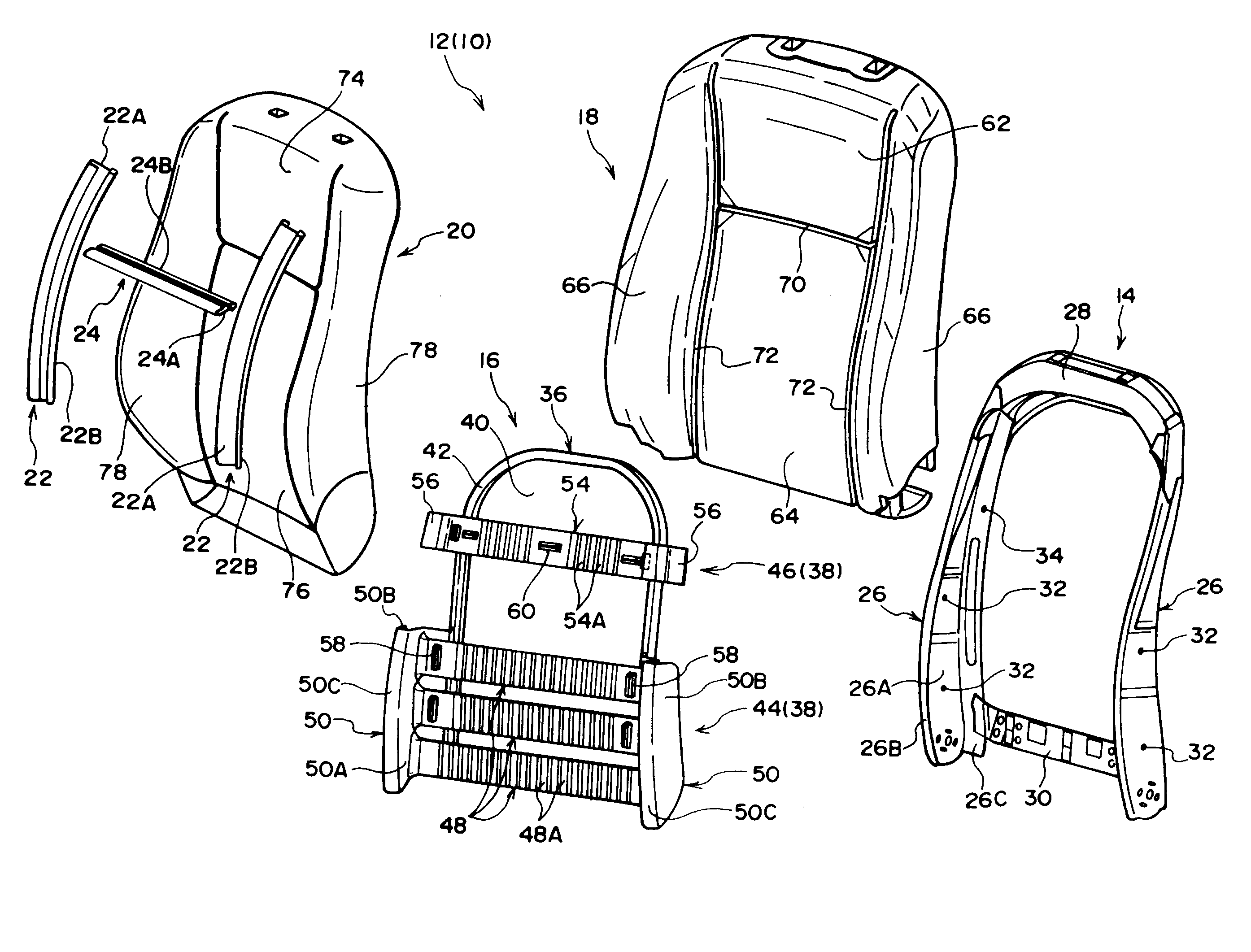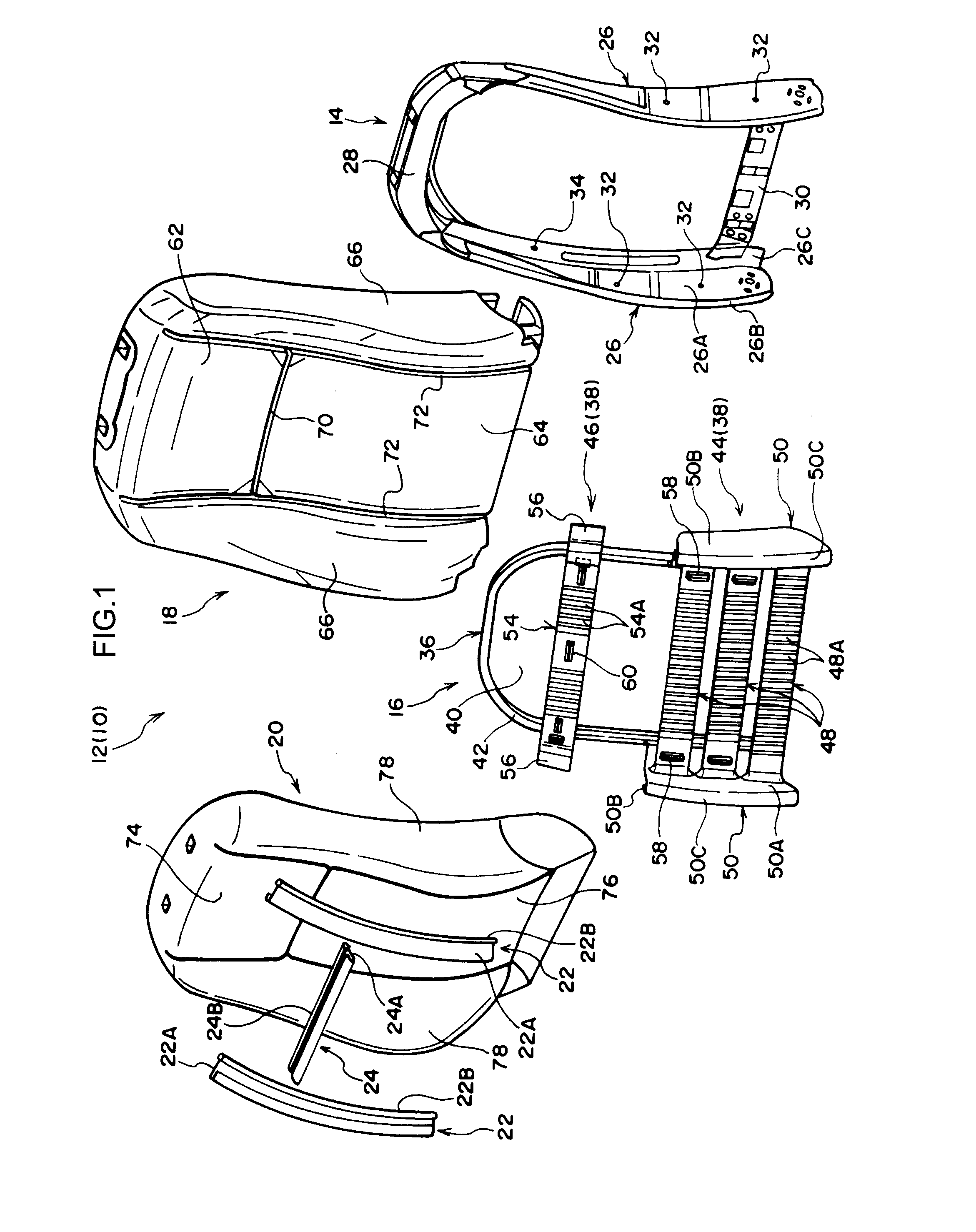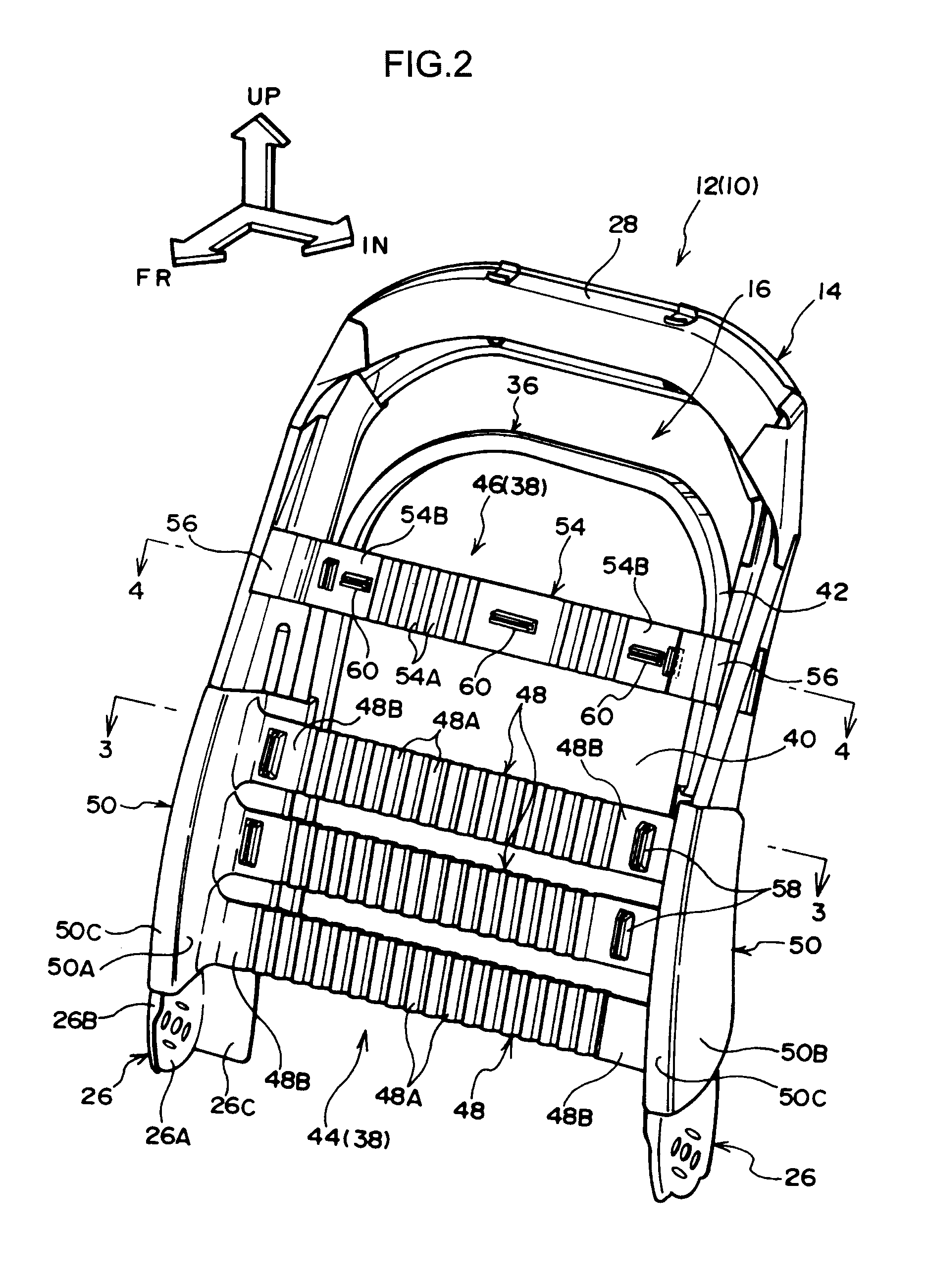Vehicle seat and seat back board
- Summary
- Abstract
- Description
- Claims
- Application Information
AI Technical Summary
Benefits of technology
Problems solved by technology
Method used
Image
Examples
first exemplary embodiment
[0082]A first exemplary embodiment of a vehicle seat is described hereinafter using FIG. 1 through FIG. 4. Arrow FR that is shown in these drawings indicates the vehicle front side, arrow UP indicates the vehicle upper side, and arrow IN indicates the vehicle transverse direction inner side.
[0083]
[0084]An exploded perspective view of a seat back of a vehicle seat relating to the present exemplary embodiment is shown in FIG. 1. Note that, in FIG. 1, the angles at which the respective structural elements are viewed are drawn so as to vary slightly for ease of viewing. Further, a vertical sectional view of the vehicle seat having this seat back is shown in FIG. 4. As shown in these figures, a vehicle seat 10 includes a seat cushion 11 (see FIG. 4) on which a passenger sits, a seat back 12 that is reclinably supported at the rear end of the seat cushion 11, and an unillustrated headrest that is supported at the top end of the seat back 12 so as to be able to move up and down.
[0085]As sh...
second exemplary embodiment
[0131]Next, a second exemplary embodiment of a vehicle seat is described using FIG. 5 through FIG. 7. The same structural portions as the first exemplary embodiment are denoted by the same numbers, and description thereof is omitted.
[0132]The exemplary embodiment shown in FIG. 5 and FIG. 6 has a feature in which a concave portion 102, that serves as a limiting component that is concave toward the vehicle front side, is formed in the back board portion 36 of a seat back board 100. In the first exemplary embodiment, the board main body 40 of the back board portion 36 limits the amount of flexure of the lower back spring main bodies 48 and the upper back spring main body 54, but the present exemplary embodiment is configured such that a bottom wall 102A of the concave portion 102 limits the amount of flexure of the lower back spring main bodies 48 and the upper back spring main body 54.
[0133]Hereinafter, the structures that differ from the first exemplary embodiment, other than the abo...
third exemplary embodiment
[0140]Next, a third exemplary embodiment of a vehicle seat is described using FIG. 8 and FIG. 9. The same structural portions as the first exemplary embodiment and the like are denoted by the same numbers, and description thereof is omitted.
[0141]As shown in FIG. 8 and FIG. 9, the third exemplary embodiment has a feature in which a seat back board 120 is structured by using lower cloth springs 122 and an upper cloth spring 124. Namely, the first exemplary embodiment is structured such that the lower back spring main bodies 48 and the upper back spring main body 54 of the seat back board 16 are all made of resin and flexurally deform, but, in the present exemplary embodiment, the lower cloth springs 122 and the upper cloth spring 124 are used instead of the lower back spring main bodies 48 and the upper back spring main body 54.
[0142]Specifically, the lower cloth springs 122 and the upper cloth spring 124 are respectively formed in the shapes of strips that are long in the seat trans...
PUM
 Login to View More
Login to View More Abstract
Description
Claims
Application Information
 Login to View More
Login to View More - Generate Ideas
- Intellectual Property
- Life Sciences
- Materials
- Tech Scout
- Unparalleled Data Quality
- Higher Quality Content
- 60% Fewer Hallucinations
Browse by: Latest US Patents, China's latest patents, Technical Efficacy Thesaurus, Application Domain, Technology Topic, Popular Technical Reports.
© 2025 PatSnap. All rights reserved.Legal|Privacy policy|Modern Slavery Act Transparency Statement|Sitemap|About US| Contact US: help@patsnap.com



